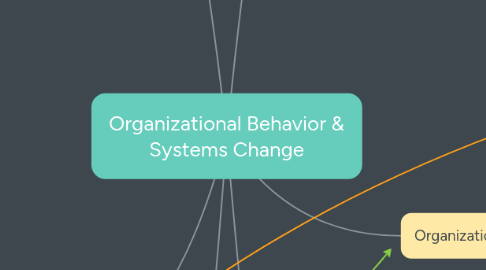
1. Value
1.1. Types of Work
1.1.1. Value Added Work
1.1.1.1. 1) Customer is willing to pay
1.1.1.2. 2) Done right the first time
1.1.1.3. 3) It improves the product or the service
1.1.2. Non Value Added Required
1.1.2.1. 1) External Regulators
1.1.2.2. 2) Internal Mandates
1.1.3. Non Value Added Waste
1.1.3.1. Transportation
1.1.3.2. Inventory
1.1.3.3. Motion
1.1.3.4. Waiting
1.1.3.5. Overprocessing
1.1.3.6. Overproduction
1.1.3.7. Defects
1.1.3.7.1. Defected
1.1.3.7.2. Damaged
1.1.3.7.3. Destroyed
1.1.3.8. Wasted human potential
1.1.3.9. Unnecessary product or service
1.2. 3 "V"s
1.2.1. Values
1.2.2. Visuals
1.2.3. Valid
1.3. Covey 2x2
1.3.1. 1) Fire Fighter
1.3.2. 2) Planned Advancement
1.3.3. 3) Trivial
1.3.4. 4) Loser
1.4. Value Equation
1.4.1. Customer = Quality/Price
1.4.2. Business = Quality/Cost
2. Iceberg
2.1. 6) Logic
2.2. 5) Culture
2.3. 4) Power
2.3.1. Node of Power
2.3.1.1. Referent Power
2.3.1.2. Formal Power
2.3.2. Zero Sum Game
2.4. 3) Politics
2.4.1. a) Negative
2.4.2. b) Positive
2.4.3. c) Naive
2.4.4. d) Loser
2.5. 2) Group Dynamics
2.5.1. a) Forming
2.5.2. b) Storming
2.5.3. c) Norming
2.5.4. d) Performing
2.6. 1) EGO
2.6.1. a) Strong
2.6.2. b) BIG
2.6.3. c) Strong/BIG
2.6.4. d) BIG/Strong
3. Good to Great
3.1. 1) Disciplined People
3.1.1. a) Level 5 Leader
3.1.2. b) The Right People on the Bus
3.2. 2) Disciplined Thought
3.2.1. a) Confront the Facts
3.2.2. b) Hedgehog Concept
3.2.2.1. What can I be the best at?
3.2.2.2. What can be an economic engine?
3.2.2.3. What am I passionate about?
3.3. 3) Disciplined Actions
3.3.1. a) Culture of Discipline
3.3.2. b) Technology as Accelerators
4. Change Curve
4.1. 1) Status Quo
4.2. 2) Chaos
4.3. 3) Exploration
4.4. 4) Rebuilding
5. S.I.P.O.C.
5.1. House of Lean
5.1.1. Create maximum customer value while minimizing waste
5.1.2. 1) Stability
5.1.3. 2) Standardization
5.1.4. 3) Just-in-Time
5.1.5. 4) Jidoka
5.1.6. 5) Customer Focus
5.1.7. 6) Involvement
5.2. Flow
5.2.1. Bottlenecks
5.2.1.1. Resource problem
5.2.1.2. Capacity is greater then demand
5.2.2. Constraints
5.2.2.1. Culture problem
5.2.2.2. Caused by obstacles that impedes effectiveness
5.3. Deming Chain Reaction
5.4. Inventory
5.4.1. Raw goods
5.4.2. Work in Process
5.4.3. Maintenance Repair Operations
5.4.4. Finished product
6. Organizational Assessment
6.1. Business Financial Statements
6.1.1. 1) Cash Flow
6.1.2. 2) Profit/Loss
6.1.3. 3) Balance Sheet
6.1.3.1. a) Assets
6.1.3.2. b) Liability
6.1.3.3. c) Net Worth
6.2. Statistical Process Control
6.2.1. What gets measured gets done, what gets done gets rewarded, what gets rewarded gets repeated
6.2.2. Comparison of data for common cause and special cause variation
6.3. Balance Score Card
6.3.1. 1) Financial
6.3.2. 2) Customer
6.3.3. 3) Internal Process
6.3.4. 4) Learning Organizations
6.4. Strategic Management Process
6.5. Business Types
6.5.1. 1) Corporation
6.5.1.1. Effective oriented
6.5.1.2. Value, mission, and goals
6.5.1.3. Example: CEO, CFO, CIO
6.5.2. 2) Competitive
6.5.2.1. Effective oriented
6.5.2.2. How are we competing with other organizations?
6.5.2.3. Example: CMO
6.5.3. 3) Functional
6.5.3.1. Efficiency oriented
6.5.3.2. Process improvement
6.5.3.3. Example: COO
7. External Impacts
7.1. STEEPL
7.1.1. Sociocultural
7.1.2. Technology
7.1.3. Environment
7.1.4. Economics
7.1.5. Political
7.1.6. Legal
7.2. Porters 5 Forces
7.2.1. Competitive Rivalry
7.2.2. Supplier Power
7.2.3. Buyer Power
7.2.4. Threat of New Entry
7.2.5. Threat of Substitution
